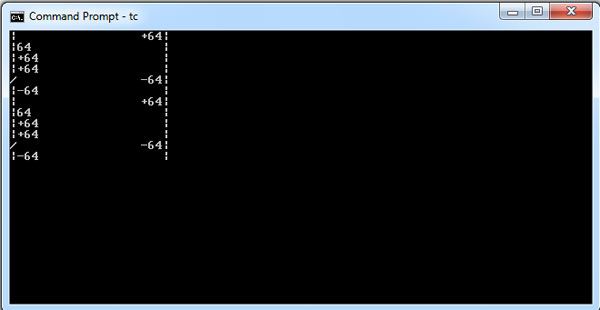In general, the sign is not displayed with positive values. However, if we desire to display the + sign, we may add it in the control string. If the display is desired to be left justified as well as with+ sign, add + or ++between the % sign and the conversion character; for example, the following code for integers.
printf(“|%+20d|\n”, K);
will display the value of K in right justification in width 20 with + sign before it, and, the following code
printf(“|%-+20d|\n”, K);
will display the value of K in left justification in width 20 with+ sign before it. For display of -ve sign it has to be put with the variable name as illustrated in the following program (because in formatting string it is for left justification). The vertical bars have been purposely included to show the placement of output between the specified widths. The space between bars represents the width of display,
Illustrates display of +ve or -ve sign in output.
#include <stdio.h> main() { int K = 64; printf("|%+20d|\n", K); // right justification with +ve sign printf("|%-20d|\n", K); // left justification with no sign printf("|%-+20d|\n", K); // left justification with +ve sign printf("|%+-20d|\n", K); // left justification with +ve sign printf("/%20d|\n", -K); // right justification with -ve sign printf("|%-20d|\n", -K); // left justification with -ve sign }

 Dinesh Thakur holds an B.C.A, MCDBA, MCSD certifications. Dinesh authors the hugely popular
Dinesh Thakur holds an B.C.A, MCDBA, MCSD certifications. Dinesh authors the hugely popular